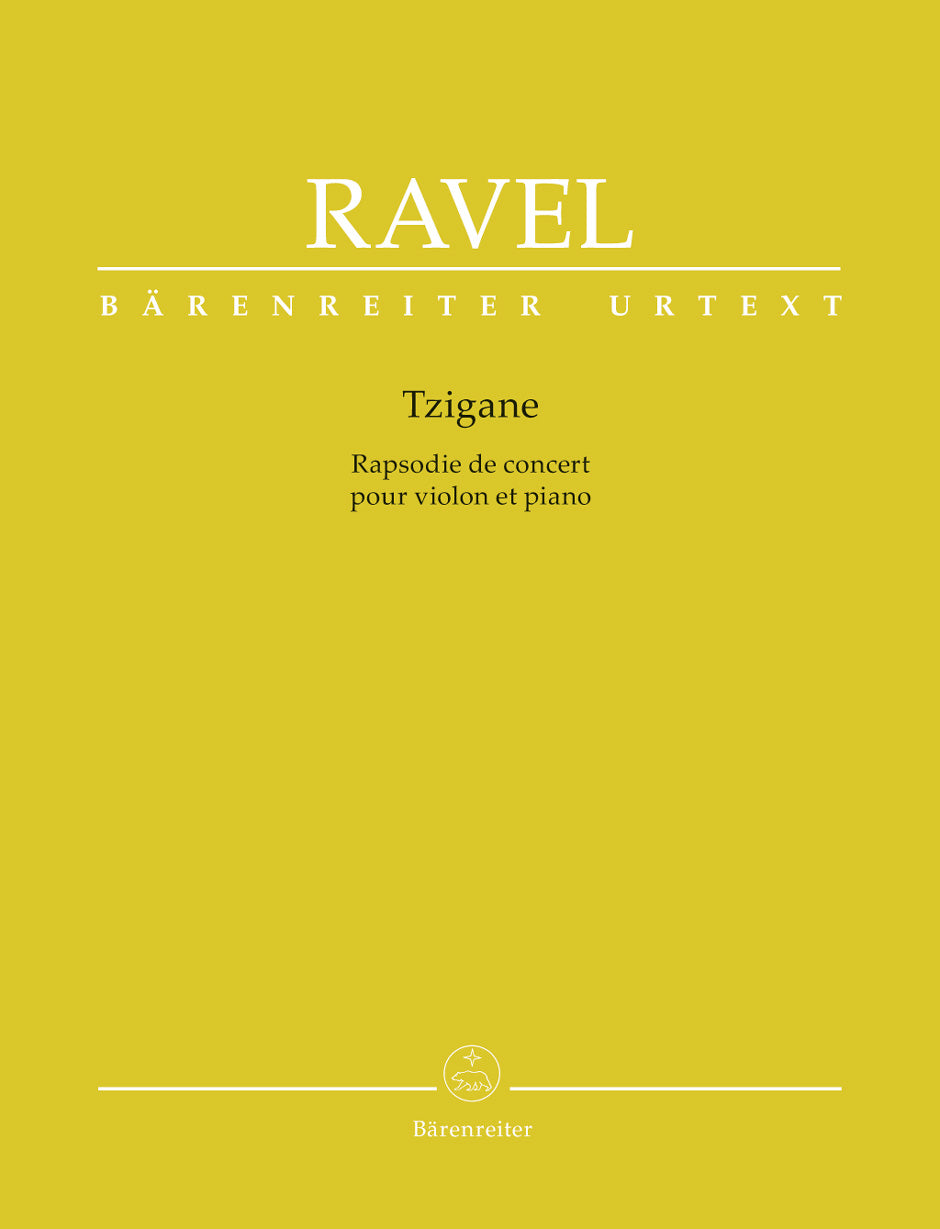


BARENREITER - 345062
Ravel: Tzigane
Composer: Maurice Ravel
Publisher: Bärenreiter
Instrumentation: Violin
Binding: Stapled
Dimensions: 12.2 in x 9.6 in
Pages: 36
Ravel: Tzigane
Juilliard Store
144 West 66th Street
New York NY 10023
United States
Choose options
Ravel: Tzigane
Juilliard Store
144 West 66th Street
New York NY 10023
United States
Ravel: Tzigane
Juilliard Store
144 West 66th Street
New York NY 10023
United States
Editor: Woodfull-Harris, Douglas
Orchestral scoring : V/piano
Product format: Performance score, part(s), Urtext edition
Binding: Stapled
Pages / Format: XXIII, 20/8/8 - 31,0 x 24,3 cm
Written originally for violin and piano or luthéal (a mechanism invented in 1919 that attaches to a piano, producing a sound similar to the rich overtones of the Cimbalon), the premiere took place in London in April 1924. The composer had finished the work only days beforehand. Ravel later orchestrated “Tzigane” and both versions remain a “must” for music-lovers and aspiring violinists today. Jelly D’Aranyi performed both versions regularly throughout her long career.
This Urtext edition presents the first scholarly-critical edition of Ravel’s masterpiece. It is published both in the orchestral version, complete with full score and performance material, as well as in the composer’s earlier version for violin and piano. All known sources, including letters, have been drawn on for the new edition; one of the available sources, consulted for the first time, was a copy of “Tzigane” from the estate of Jelly D’Aranyi, which is today part of a private collection.
The version for piano and violin contains, besides the Urtext part, a second violin part as a facsimile with performance instructions by Jelly D’Aranyi. D’Aranyi’s alterations and fingering reflect how Ravel must have heard the work in rehearsals and performance and as such are a document of early 20th century performance practice. The cooperation between Ravel and D’Aranyi is comparable to that of Brahms and Joachim working on the Brahms violin concerto.
